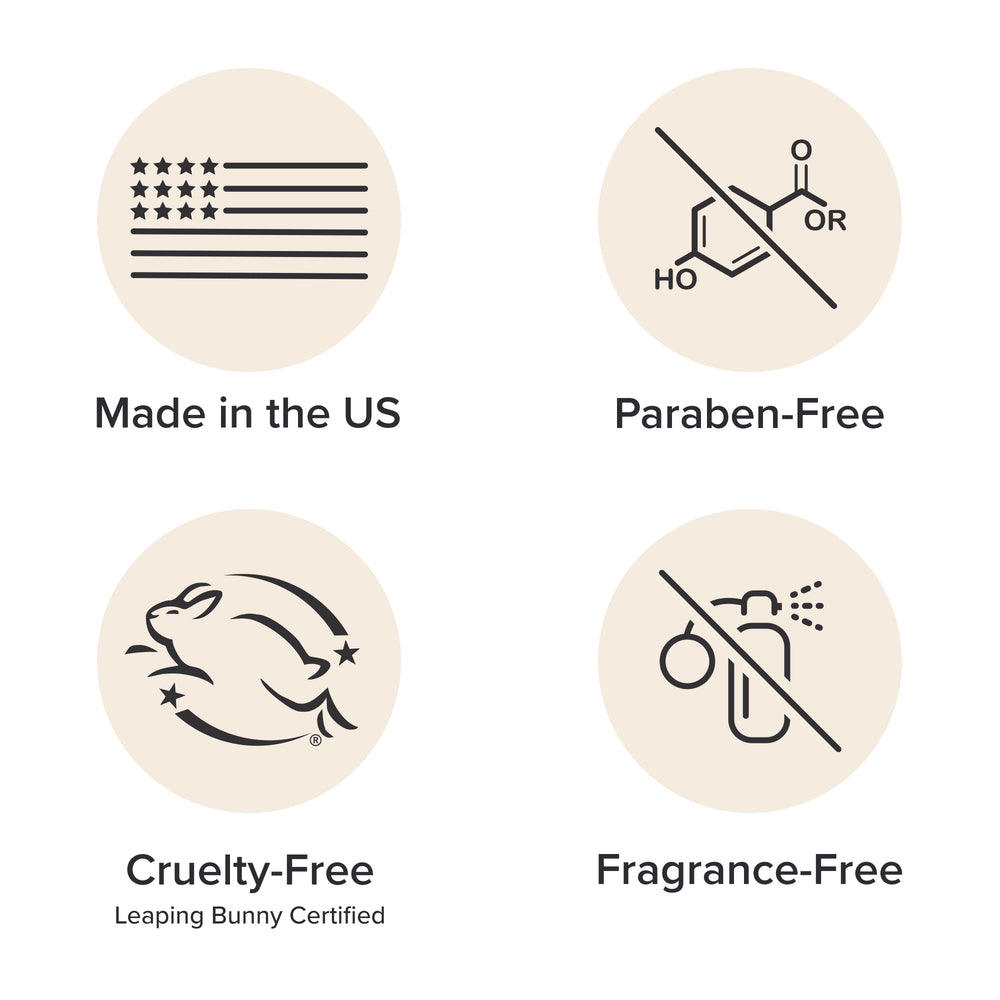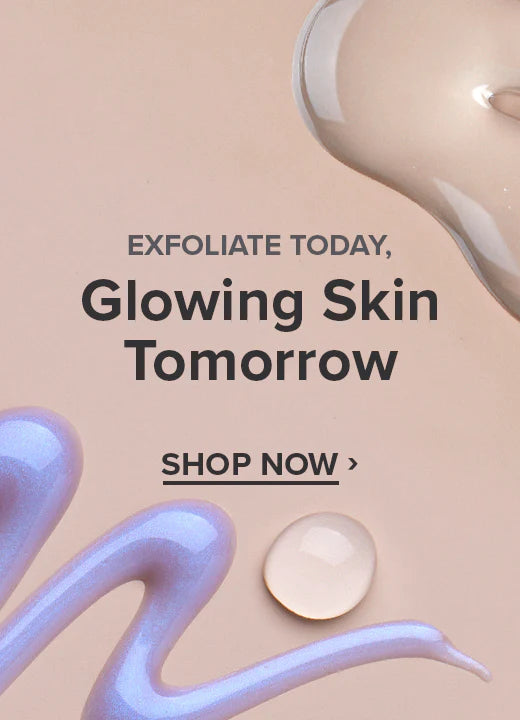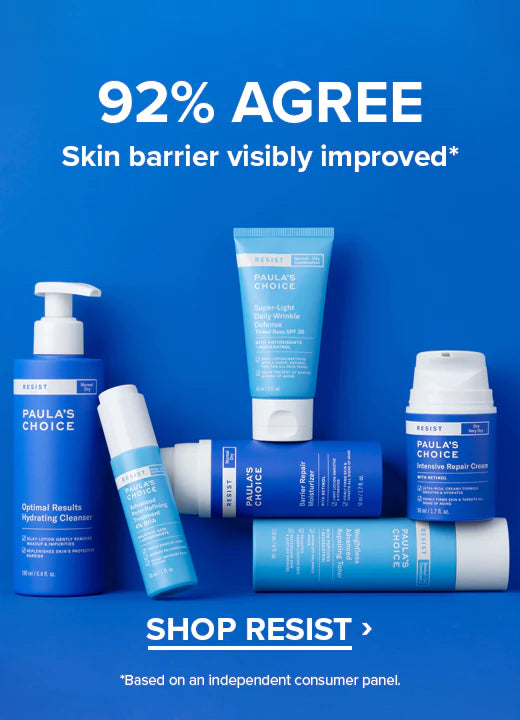Anti-Aging Superstars
Written by: Bryan Barron
Is there a single best anti-aging ingredient? The answer is no, there isn’t. But, don’t be disappointed! The good news is that there are dozens of brilliant ingredients for skin. To make the best decisions for your skin, you need to know what research has proven is essential for truly combating signs of aging and taking the best care of your skin.
What Skin Needs to Fight Signs of Aging
There seems to be very little in the world of skin care that everyone agrees on, but, with few exceptions, to one degree or another, most would agree that the best types of products to truly combat signs of aging must include the following: sunscreen, leave-on exfoliants, antioxidants, and skin-restoring and skin-replenishing ingredients.
Sunscreen is the superstar of all superstars in the world of skin care, especially for anti-aging, and it must be a broad-spectrum sunscreen rated SPF 30 or greater.
We know that sunscreen isn't nearly as sexy as the latest antiwrinkle cream dressed up in slick claims and packaging, but it is far and away the most important. When used correctly, meaning applied liberally, 365 days a year, rain or shine, no matter how long you think you’ll be exposed (1 minute of time in UV light is all it takes for sun damage to begin), sunscreen is your best defense against the visible effects of sun damage and helps prevent early skin aging.
Exfoliants remove built-up layers of dead, rough, thickened, surface skin that makes skin look rough, dull, wrinkled, and dry. This surface renewal reveals skin that’s remarkably smoother, more even, hydrated, radiant, and younger-looking.
The catch? We’re not talking about scrubs! Rather, we’re referring to non-abrasive, leave-on exfoliants that contain AHA (alpha hydroxy acid) or BHA (beta hydroxy acid) ingredients. The AHAs to look for include glycolic and lactic acids; the one and only BHA ingredient is salicylic acid. Paula’s Choice offers an extensive selection of effective, fragrance-free AHA and BHA exfoliants.
Antioxidants defend against environmental stress, help calm skin, and play a role in softening the signs of aging. There are hundreds of antioxidants used in skin care products, so don’t get caught up over any single one. Some of the most researched antioxidants for skin include green tea, vitamin C, vitamin E, soy, genistein, pomegranate, and resveratrol—but these are just the tip of the iceberg! For best results, look for serums that are enriched with a mix of antioxidants.
Skin-restoring ingredients can nourish skin in a way that helps it regain its youthful, vibrant appearance. These ingredients also help improve skin tone and texture and soften the appearance of wrinkles. Examples include retinol, niacinamide, peptides, and adenosine.
Skin-replenishing ingredients are the same substances found naturally in skin that help it maintain its surface integrity. These replenishing ingredients make skin feel soft and supple, relieve dryness, and, if used daily, help safeguard skin from environmental factors that lead to moisture loss and dehydration. Skin-replenishing ingredients include glycerin, ceramides, various fatty acids and lipids (including those found in plant oils), hyaluronic acid, and cholesterol. Paula’s Choice toners and moisturizers include a sophisticated blend of these ingredients.
Abundant research makes it crystal clear that all of these groups of ingredients are as good as it gets in the world of skin care when you’re concerned about wrinkling and other signs of aging.
These state-of-the-art ingredients, especially when combined in one product, are the types you need, regardless of the name on the label or the product category. If the product doesn’t contain these ingredients, then why bother?
Essential Shopping Tips
The price won't help you. There are lots of expensive products that deprive your skin of great ingredients and lots of affordable products that generously serve up what your skin needs, and vice versa. What counts most are the ingredients, not the final price.
You don't necessarily need an eye cream. There’s no research showing that eye-area skin needs something different from skin on the rest of your face. There are many great eye creams on the market, and most of them contain ingredients that make them good moisturizers, but that doesn’t mean they are special for the eye area as often claimed.
If you want to use an eye cream, look for one that really differs from your facial moisturizer; for daytime, it would contain a mineral-based sunscreen and for nighttime it would be best if it had a balm-like texture and you wore it more as an overnight mask, applying a thick layer and allowing it to slowly absorb as you sleep.
Never buy any "anti-aging" product that’s in jar packaging because the state-of-the-art ingredients we mentioned above won’t remain stable once you've opened the jar and exposed the contents to air and light.
There Is No Single "Best" Ingredient…
…there are just lots of great ones. All of the ingredients listed above—antioxidants, skin-replenishing ingredients, and skin-restoring ingredients—are the leading elements that contribute to making a state-of-the-art anti-aging product. And there are many brilliant formulations in stable packaging that include these substances.
Remember, contrary to what cosmetics companies want you to believe about their products, there’s no single miracle ingredient for skin. Month after month, new skin care ingredients appear one after the other, all claiming to be superior to their predecessors.
Even when there is research showing that an ingredient can be effective for skin, that doesn’t make it better or more essential than hundreds of other ingredients—it's just another option, not a must-have.
Think about it like your diet. Although broccoli or grapes are incredibly healthy to eat, if you eat only those foods, your health will eventually suffer. Skin is the body’s largest organ and its surface requires a range of beneficial ingredients to remain smooth, resilient, and healthy looking.
Learn more about anti-aging & wrinkles.





